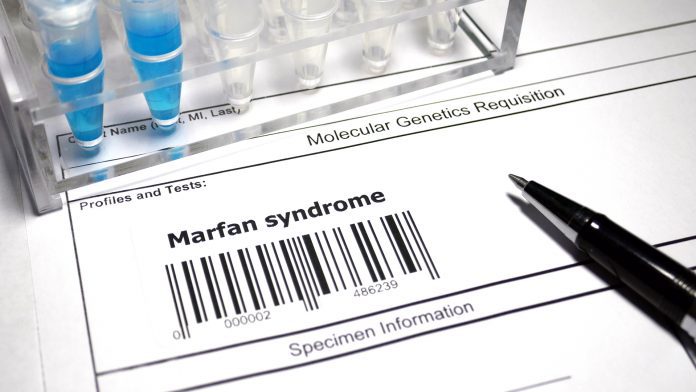
A new Marfan syndrome treatment could delay the need for surgery and reduce aortic root size in patients, according to research presented at the ESC Congress 2022.
Approximately, one in 5,000 people are affected by Marfan syndrome worldwide. The condition is often caused by a mutation in the FBN1 gene. Recently, beta-blockers and angiotensin receptor blockers (ARBs) have been found to have similar effects on reducing aortic root size in patients, meaning they could be used as an effective Marfan syndrome treatment.
Marfan syndrome treatment is usually invasive
Most Marfan syndrome patients experience aortic root enlargement, which increases the risk of life-threatening aortic dissection and rupture. To prevent this, elective surgery to replace the aortic root may be carried out when dilation reaches 4.5-5 cm. However, new research may have provided an alternative, non-invasive Marfan syndrome treatment.
Beta-blockers have been recommended to slow aortic growth in accordance with a previous, randomized trial. ARBs have also been suggested as an effective Marfan syndrome treatment.
Researchers from Oxford Population Health conducted an analysis on behalf of Marfan Treatment Trialists’ Collaboration (MTT). The researchers assessed the effects of ARB versus control (a placebo), 2) ARB versus beta-blocker, and 3) indirect beta-blocker versus control, on the rate of change in aortic root size adjusted for age, sex, and body surface area. The data was drawn from 1,442 patients with no prior aortic surgery from seven randomised trials.
The researchers first analysed four trials involving 676 patients, comparing the effects of ARB to the control placebo. The average age of participants was 29 years, 54% were women, 75% were receiving a beta-blocker, and 83% of genotyped patients carried an FBN1 pathogenic variant.
Participants were assigned an aortic root Z score, a widely used measure of aortic root size. The annual increase was +0.07 with ARBs versus +0.13 with control, for an absolute difference of -0.07. Similar effects were found when absolute aortic dimensions were analysed.
“The benefit of ARB therapy was particularly large in patients with an FBN1 mutation at baseline, making it more plausible that the effect is real. There were no other detectable differences in treatment effect depending on other patient characteristics, including age, sex, and blood pressure. The benefit of ARB treatment was similar regardless of whether patients were taking a beta-blocker,” said lead study author Dr Alex Pitcher, Consultant Cardiologist at Oxford University Hospitals.
The other 766 patients were analysed in the three remaining trials. These trials compared ARB with a beta-blocker. The average age was 14 years, 44% were female, and none of the patients were receiving beta-blockers. 86% of genotyped patients had an FBN1 pathogenic variant.
ARB and beta-blocker combination could be ideal
Over the next three years, the median annual change in the aortic root Z score was similar in the two groups. Results from the two analyses were used to evaluate the effect of a beta-blocker as a Marfan syndrome treatment, compared with the placebo. Allocation to a beta-blocker was also estimated to approximately halve the annual change in the aortic root Z score.
“Our results suggest that ARBs and beta-blockers have similar, substantial, and independent effects on reducing the aortic root Z score which, if maintained over a period of several years, would be expected to delay the need for elective aortic root surgery. The findings indicate that combination therapy, where tolerable, may be a Marfan syndrome treatment.” Said Dr Pitcher.








